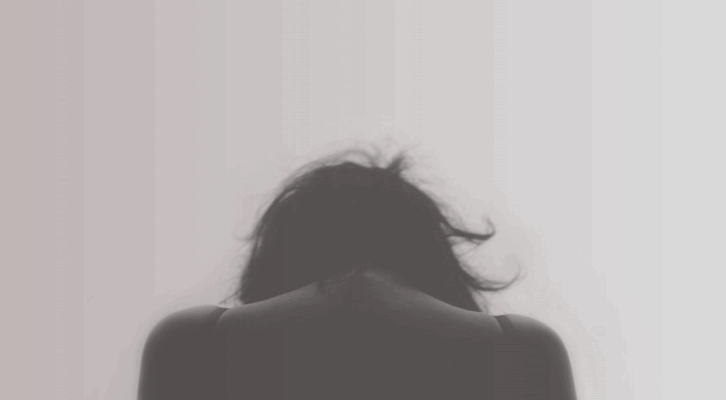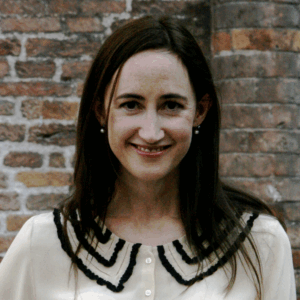
How the Psychological Burden of Debt Impacts Our Physical Health
Kristin Collier Explores the All-Encompassing Toll of Economic Precarity in America
I learned that my mother had a severe gambling addiction and had borrowed money from many of her family members, maxed out all her credit cards and, then, when all the credit lines had collapsed, she’d taken money from her employer. I sat on the twin bed, looking out the window. In Michigan, the peaches would be sweet and full. The farms that fanned out from the lake smelled like manure and rotting fruit by midsummer. I missed it.
“She wanted to pay it all back and she thought she’d be able to,” my aunt said to me, leaving another sentence implied: Of course that would be impossible. As we spoke, my mother was in jail waiting for her parents to pay her bail—my parents had no money—so that she could return home where she’d remain until the trial. I felt something familiar coil and uncoil within me.
After we’d hung up and I dressed, I sat on the open lawn away from the dorms. My aunt didn’t mention my name in the list of people my mother had either borrowed or stolen from, and it didn’t occur to me that I should demand inclusion. What my mother faced was life-destroying—addiction, criminal charges, the pang of an empty bank account that would never be refilled. She no longer had a job, and my father’s modest salary would go toward her defense and everything else. Even if she avoided incarceration, they would lose everything.
The debt burden that she could not manage, that would not go away, that was hurting her, became something else entirely. It had texture and flavor. It could choke her.
I felt myself dissipating—breaking up into smaller and smaller pieces with wet and softening edges. I bled into the campus, the classroom, my summer school students, my mother, our debt. To demand that my mother and family contend with what had happened to me would require me to solidify again. I would first have to insist on my own existence, and I couldn’t.
*
Steph acquired the first of her loans when she was sixteen and enrolled in Simon’s Rock (now called Bard College at Simon’s Rock), a college that serves high-achieving young students who are ready to attend college before their peers.
I spoke with Steph, who was thirty-nine and white, on a virtual call in the fall of 2023, each of us sitting with a square of our home behind us: mine, an unfinished basement where I worked, and hers, what appeared to be a living room. “My chimney is being repaired today,” she warned me, “so there may be some loud knocks.”
Steph would have stayed at the arts magnet high school she’d been attending—she adored it—but because of a busing issue, that high school was no longer available to her, and she didn’t think a traditional school would be a good fit. Though she was awarded some need-based and some merit-based aid, she still needed to borrow money to attend the college, whose tuition, she recalled, was $28,000 her first year and $2,000 more each year afterward. Signing the loan papers, she remembered fearing the debt’s impact on her future, to which her mother said, “You can’t get blood from a stone.” Steph understood that to mean: If you don’t have money, then the lenders won’t be able to take it. I considered that this aphorism obscures the fact that you still might try everything possible—to the detriment of your career, dreams, relationships, and health—to have enough money to give them.
“I don’t regret it,” Steph said, despite this school leaving her with an incredible amount of debt. She met her husband there and had a great educational experience. After graduation, she took a year off and then enrolled in a Master of Fine Arts in Creative Writing at the University of Pittsburgh. She’d wanted to be a creative writing professor since high school, facilitating the kind of rich and imaginative classroom that she had loved her entire life. Getting her master’s degree was the next step.
But after graduation, Steph could not find a full-time position. “It was 2005,” she said to me, “so the idea of getting a job in academia was not as much of a pipe dream as it is today.” Though she couldn’t find the job she wanted, she did become a part-time adjunct professor while working full-time at a law office. One semester, she used up all her sick days so that she could teach her once-a-week writing course to nursing students. The writing course only paid Steph $1,200 for the semester, not even enough to cover her loan payments, which were about $600 each month.
“It felt like”—she paused for a moment, grabbing for language that would clarify her experience for me—“a horrible joke that I took out all this debt to be able to do this job. It’s a real job,” she said, emphasizing the word “real” as if to remind herself that she had not conjured this job from nothing. It had existed. “And then the job wouldn’t pay me enough to cover the debt that I took out to get the job and the ridiculousness of that was really crushing.”
Before she gave up on becoming a professor, she taught a few more classes, one of which met during her lunch break at the law firm. She commuted by bus across town to teach before returning to her office to finish the rest of the day. In the end, these jobs did not pay her enough, and she needed the vacation and sick days that she was using to teach, so she quit. “Adjunct faculty are paid, on average, $3,894 per class taught, with the annual income of the lowest-paid adjuncts near the minimum wage, and given that most of them have advanced degrees, they also bear the burden of the $1.7-trillion student debt crisis,” according to Business Insider. I’m certain Steph was a good teacher.
Steph and her husband, who also had student debt, sometimes called themselves “poor with an asterisk.” She said, “On paper we were not rich, but we should not have been so poor.” The asterisk was a drain, slurping up their resources and making it impossible for them to care for themselves, despite working full-time. So overwhelmed by the stress of the constant calculations of how to—just barely—get by, Steph developed severe panic attacks and a condition in which she struggled to swallow. “I would chew up food and move it to the back of my throat and then would feel this flare of panic, like, I don’t know how to swallow. I’m going to choke.” It was as if Steph was drowning in her own body, nearly dying doing what should have been a restorative, nourishing act: feeding herself.
After an endoscopy and swallow therapy, a doctor asked her if perhaps what was plaguing her had less to do with her throat muscles than with a grief, anxiety, and depression that she couldn’t manage. “It didn’t occur to me that my anxiety could be the root of a physical symptom,” she said. “It was eye-opening.” Steph did learn to swallow again, in part by helping her body understand what represented a threat. The food did not. The debt burden that she could not manage, that would not go away, that was hurting her, became something else entirely. It had texture and flavor. It could choke her. This transmutation allowed for the specter of choice, which ultimately, she didn’t have; she needed to eat. Still, I understood this urge to resist collection in another form.
*
In a 2013 paper in Social Science & Medicine, researchers studied debt’s impact on general health outcomes—the first study of its kind, they noted. Earlier scholarship traced the impacts of socioeconomic status on health and the impact of debt on mental health, but before this study, no one had drawn a clear, thick arrow between debt and a body. Because of Americans’ rapid accumulation of debt since the 1980s—including medical, credit card, student loan, payday, and mortgage debt—more people are experiencing indebtedness than ever before, and it’s hurting them. It’s hurting us. The study, which focused on young adults between the ages of twenty-four and thirty-two with personal debt, found that debt is “a significant predictor of health outcomes.”
Debt cannot be understood in isolation. It follows that even small amounts of debt can be devastating if the complete picture is bleak, if it includes other layers of precarity.
Indebtedness, and just as importantly, the feeling of indebtedness, corresponds with high blood pressure, stress, depression, and worse health outcomes. Chronic stress can be especially dangerous because it continually triggers the body’s fight-or-flight response without allowing the body to recover when the stress has passed. The body’s attempt to protect itself impacts all of the body’s systems, leading to hypertension, heart attacks, and strokes. It gives us stomach aches, bloating, heartburn, acid reflux, and weakens our intestines, making us vulnerable to bacterial infection.
The Social Science & Medicine authors note that some kinds of debt, such as a manageable mortgage, can be a positive predictor of general health. In these cases, the debt often correlates with higher income levels and other assets. What the researchers don’t say is that this kind of debt, this positive debt, is also racialized. Good debt is enabling, according to scholars Louise Seamster and Raphaël Charron-Chénier, and bad debt is a hindrance—and they highly correlate with what Seamster coined as “White debt” and “Black debt.” Debt cannot be understood in isolation. It follows that even small amounts of debt can be devastating if the complete picture is bleak, if it includes other layers of precarity that follow from race, disability, wealth, sexual orientation, immigration status, etc.
In an op-ed on food and housing insecurity in the college population, Professor Sara Goldrick-Rab recalls a student she interviewed who slept in “libraries, bathrooms, and her car.” Stretched for money, she sold her plasma and often didn’t eat. When this exhausting cycle left her unable to focus, her grades dropped, and she lost financial aid, after which she left college, homeless, without a degree and with debt that would follow her for years, maybe the rest of her life.
*
In late fall of 2008, a couple of months after program training, I was slumped against my boyfriend, waiting for the pharmacist to fill a prescription for an antibiotic to treat a kidney infection, the first of many I’d have that year. I was getting UTIs all the time, no matter when I peed or how much water I drank or what steps I took to mitigate infection. Sometimes, the pressing urge of the infection alerted me quickly enough to get medication, but this time the infection traveled before I caught it, climbing its way through the urethra, up the ureter, and into my kidney. I felt its presence in a wave of fever and a heavy, steady punching in my kidney. It got so bad that I couldn’t think, could hardly walk.
“Will the meds be ready before you close?” I heard my boyfriend, a first-year med student, ask the pharmacist. “She’s in so much pain.”
__________________________________

From What Debt Demands: Family, Betrayal, and Precarity in a Broken System by Kristin Collier. Copyright © 2025. Available from Grand Central Publishing, an imprint of Hachette Book Group.
Kristin Collier
Kristin Collier is a graduate of the University of Minnesota MFA program. She has been a recipient of Minnesota State Arts Board funding and a Yaddo artist residency. Her writing has been published with Fourth Genre and Longreads and was recently anthologized in Coffee House Press’s American Precariat. She is an organizer and high school English teacher, living in Minneapolis.



















